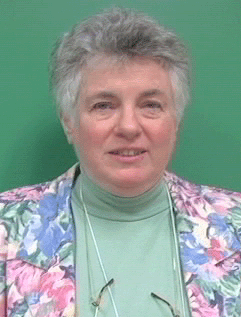 Chief Scientist
Chief ScientistDr. Cynthia Kolb Whitney is the Editor and Publisher for the dissident physics journal Galilean Electrodynamics, and for the Proceedings of the Natural Philosophy Alliance. She earned three degrees at M.I.T. (S.B. Physics, S.M. Electrical Engineering, Ph.D. Mathematical Physics), and had a long career in the American defense industry, much enriched by supervising engineering thesis students at M.I.T., and by a time as a Visiting Industry Professor in the then-active Electro-Optics Technology Center at Tufts University. She welcomes mail contact at: 141 Rhinecliff Street, Arlington, MA 02476-7331, USA; and e-mail contact at: Galilean_Electrodynamics@comcast.net.
In her Own Words
I am now a person in retirement, which means I am busier than I ever was when employed. I am the Editor of Galilean Electrodynamics, the slightly offbeat physics journal that invited me to take over in 1997, and of The Proceedings of the Natural Philosophy Alliance, the slightly offbeat society that invited me to start publishing its papers in 2004.
I am also deep into physics research. It turns out that physics made some unnecessarily limiting decisions in the early twentieth century, and as a result has not yet done all it really should do with classical theories. So I am now trying to do my bit with respect to atoms and molecules.
It has been quite a long journey. Like a chameleon, I have appeared as computational chemistry student, electrical engineering student, relativity student, optical engineer, atmospheric scientist, industrial engineer, control theory engineer, somewhat dissident physicist, and now again a computational chemist. The following paragraphs give a more detailed story of the journey.
I was born in 1941, the only child of parents I now recognize to have been quite unusual. My Dad was a totally self-educated chemist who rose to a respected position in Celanese Corporation of America. My Mom went to Maryland Institute of Art, but dropped out before graduation because of the Great Depression. She was an amazing artist before, during, and after.
They were both bimodal too. My Dad was also talented at writing, and wrote all the reports that his employees couldn't manage. My Mom was also intuitively talented at mathematics, and could generally see through complicated geometry, financial foolery, or whatever.
I got both sets of abilities. I was developing the Mom batch all through the very conservative 1950's, until the moment our whole nation got its big epiphany in the form of the Sputnik launch.
All of a sudden, our high school got big improvements; for example, we got a physics course out of MIT, through the Physical Sciences Study Committee. All of a sudden, there were no barriers to anybody who could manage to do science. All of a sudden, even a girl was wanted as a scientist. So I got really turned on with science. I took every course offered, did every science fair project possible, etc., etc.
Then I thought, for the fun of it, I would apply to MIT. Well, I got in. Fast, too. So I neglected to fill out any other applications. So my horrified parents had to let me go to MIT. And I loved it. I met my husband Dan there, and I got three degrees there. The first was a bachelor of science in physics with a thesis in computational chemistry; the second was a master of science in electrical engineering with a thesis in statistical communication theory. The last one was a PhD in mathematical physics, with a thesis in special relativity theory (SRT).
In 1967 I got my first permanent job at Draper Lab (then part of MIT) where the engineers were doing all sorts of things in support of the Apollo Program. It was not in so many words, but their message was: ?OK smarty pants, have a look at this. It's what you will be working on. It's a ring laser gyroscope. It's based on the Sagnac effect. The Sagnac effect violates SRT. What do you think of that??
Well, I resisted and resisted. I was sure I could make that gyro do the right thing without upending SRT. But a seed of doubt had been planted in my mind. Indeed, my whole education was in doubt. So I resisted for a good ten years ? way beyond the end of the gyro project. But then came my personal epiphany.
One fine winter day in the late 1970's, I was in the Boston Science Museum with our two little sons, and we saw a display involving a sort of pearlescent fluid in a circular disc that the viewer could spin and thereby cause the fluid to develop a spiral pattern, looking much like a spiral galaxy.
At that moment, I felt I had been hit over the head with a two-by-four. I had an out of body experience. I saw myself from a few feet above, standing there with my eyes popping out and my jaw dropped open.
As a practicing engineer, I knew that the finite speed of signal propagation through the medium in the disc made the spiral pattern develop. So, did a finite speed of gravity propagation cause the spiral pattern of galaxies to develop? We all raced up to the museum library and searched all over it. There was no evidence whatever of any such idea ever having been considered.
I could not put this idea down. I worked on it for years, throughout the remainder of the 70's and early 80's. This was early in the computer revolution, and I would get up at 4 or 5 am, when our boys were not occupying our one-and-only personal home computer, to work on this idea. It really took over my life.
I could compute all sorts of things. If a pair of black holes made a two-body system, at the center of a galaxy, then the background potential field they would create for the other little stars to orbit in would certainly have a bilateral spiral shape to it. Not only that, but there would be a graceful little bar in the middle, matching what is called a ?barred spiral galaxy'. And the little stars would be thrown steadily outward, forming a flat disc galaxy. And a greater density of older darker stars would be at the outer edge of the galaxy. It all fit.
But I couldn't do what I wanted to do with these calculations. No mainstream astrophysics journal would publish the information. Why? Because all of present day gravity theory is modeled on present day electrodynamic theory, and that in turn is based on an assumption that was introduced in the 19th century (this was before ever Einstein said anything) that there was such a thing as ?the speed of light', and that it had the unambiguous value c = 3 X 108 m/sec. And when you work out the electrodynamic potentials and fields under that assumption (the Lienard-Wiechert potentials and fields), the Coulomb electric field comes out pointed in a direction such that it acts as if there were no signal delay.
Does that result sound paradoxical to you? It should. But it didn't strike 20th century physicists as odd, because that's what the math does, given the assumption used, and ever since Einstein almost everybody has used that assumption.
Fortunately, around that time, there were some not-so-main-stream journals and societies, either rather newly launched, or soon to be launched. I am very thankful for journals like Journal of Scientific Exploration, Hadronic Journal, Galilean Electrodynamics, Apieron, Physics Essays, and for societies like the Society for Scientific Exploration, the Natural Philosophy Alliance, and the British Society for Philosophy of Science. They made it possible for me to go on.
For a long time in the 80's, I hunted for mathematical errors in the derivations of the Lienard-Wiechert potentials and fields. There are indeed some of those in the modern re-derivations. The errors have to do with overly-casual use of generalized functions, like the Heaviside step and Dirac delta, which lack the mathematical property of uniform convergence, and so do unreliable things whenever mixed up with operations like ?integrate' or ?differentiate'. But so what? The original Lienard and Wiechert derivations just used pedestrian algebra, and they were correct, given the assumption used.
For another long time in the 80's, I hunted for implications of signal delay in the micro domain of quantum mechanics. There is a big one. Planck's constant need not be regarded as an independent constant of Nature. It is a consequence of a balance between two effects. One is well known: radiation damping. When an electron goes in a circle around a nucleus, it produces radiation, and this eats up its orbit energy. The other effect was previously unrecognized: if you consider any reasonable variation on the Lienard-Wiechert model, then signal propagation delay causes internal torquing within the system, and it can create an energy gain mechanism that can counter the effect of radiation damping. This makes for a revised and extended quantum mechanics (QM).
For a little while in the late 90's, I hunted for exactly what kind of assumption about light propagation should replace the simple speed c assumption. It turned out that the Sagnac effect provided a formal answer. Given the details of that effect, there is only one possible mathematical formulation about light propagation that can work. You may not know why light propagation is that way, but that's definitely the way it is. And it makes for a revised and extended SRT.
For the rest of the 90's and early 00's, I developed an idea about the 'why' of it. I think the reason is that light signal propagation is not a simple matter of a well-defined pulse traveling from 'here' to there'. Instead, signal propagation happens in two steps: expansion from the source, followed by contraction to the receiver.When expansion is happening, the mid point of the light signal is traveling at c, but its leading tip is traveling at 2c. When contraction is happening, the mid point of the light signal is traveling at c, but the trailing end is traveling at 2c. Simple. And this simple physical model produces the mathematical model that the Sagnac effect demands.
Now for another long while I have been hunting for more implications in the micro domain. It turns out there is a whole boatload of them in chemistry. Have a look at data about ionization potentials of the elements ? first order ones, and higher-order ones too. That data looks like it was created with a random number generator. It wasn't. There is a dramatic regular pattern to it that emerges when it is studied from the viewpoint of the extended QM.
For another little while, in the summer of 2008, I ?drilled in' on the source of my postulated expansion/contraction propagation model. It turns out to be simple. It should have been expected for a light signal pulse in the 19th century, and confirmed for a photon in the early 20th century. The main thing about a light signal pulse, or a photon, is that it has finite energy. So it has to be bounded in all three spatial directions. Now everybody knows what happens as a result of boundaries in the two directions transverse to propagation: diffraction happens. That means fringes, rings, and focal spot spreading in the transverse directions. Now what about boundaries in the longitudinal direction? Isn't it obvious that spreading must happen in that direction too? In fact, you can track the evolution of the spreading through Maxwell's coupled differential equations for E and B. The inevitable spreading turns a sharp pulse into a spread-out Gaussian. This accounts for the expansion from the source that I had asserted. And since the process of absorption by a receiver is just the time-reversed version of emission by a source, the mechanism also accounts for the contraction to the receiver that I had asserted.
There is probably also a boatload of implications in elementary particle physics. I have recently made one foray into that in Hadronic Journal. Its founder R.M. Santilli had pointed out that there is a big problem about the neutron: it is really too massive for its seeming constituents (proton and electron) to account for in any reasonable way. A lot still remains to be done to really understand the neutron.
It is now 30 years since my science-museum epiphany. The little children I had with me on that day now have little children of their own, and science museums of their own to visit. Grandma is doing OK. Now a cadre of chemists not only allows, but even invites, my papers, because they solve problems that are of practical concern in chemistry.
The whole story, being 40 years from the planting of doubt in my mind, through my conversion by epiphany, up to my present state of resolution, strikes me as being similar in scope to a biblical one. And if you go back 60 years, to when I was an artist, you can see how I tie it all together in my mind: I feel like the Grandma Moses figure in my own peculiar mental landscape!
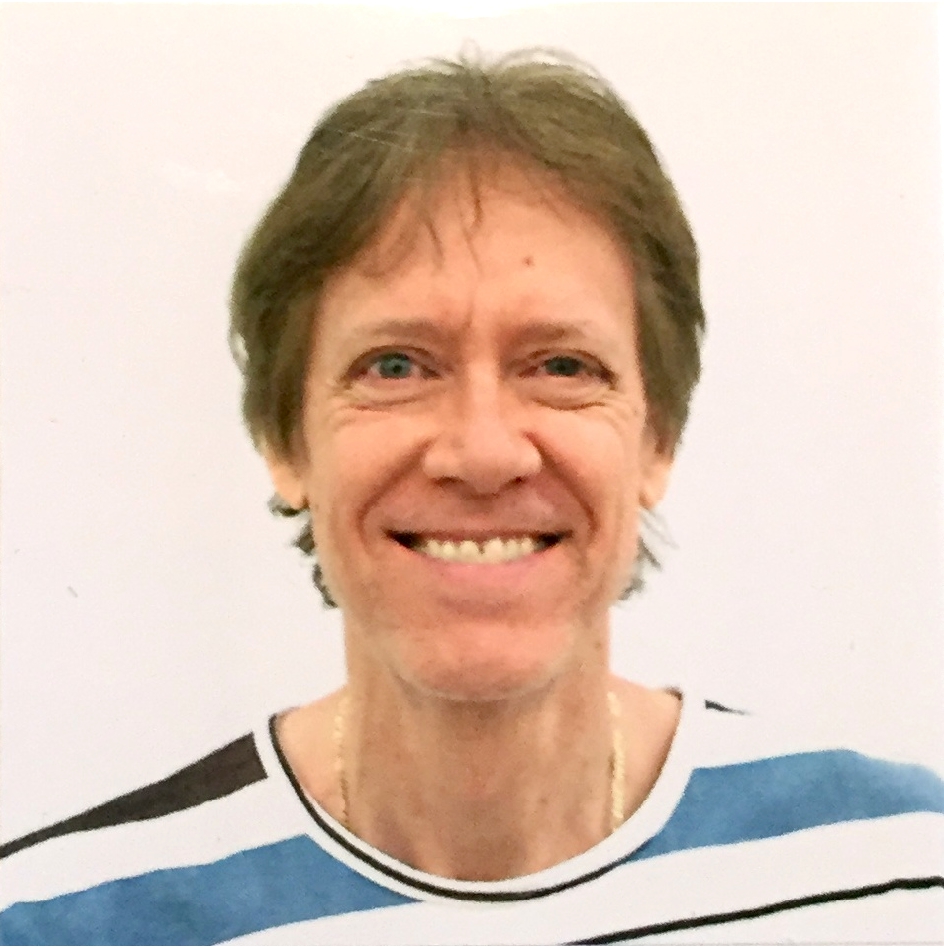 President
PresidentI am a computer scientist, artist, and filmmaker and have been involved with the NPA and now the CNPS for 20 years. I live and work in Boca Raton Florida and currently work in the Supercomputer Research group at LexisNexis specializing in computers and human language. My father Robert and I are currently working on a physics book called "Universe Hack 3.0 - A Particle Model of the Entire Universe".
My interest in physics and cosmology came when I met Argentine physicist Dr. Ricardo Carezani who showed Einstein's special relativity wrong in the early 1940s. In 1996, I met Dr. John Chappell, the founder of the Natural Philosophy Alliance and since then, I have been helping out with the organization by organizing the group through the website and being instrumental in many of their annual conferences, hosting two of them myself along with my family. I also directed and produced the full-length documentary Einstein Wrong - The Miracle Year.
My goal for the next three years is to help modernize and drive more people in the direction of the John Chappell Natural Philosophy Society and to continue to help scientists and the group have more visibility in the scientific world.
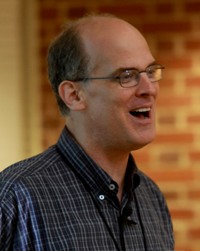 Vice-President
Vice-PresidentI attended Stanford from 1979 to 1984 as an electrical engineer and also took the entire core undergraduate curriculum in physics. I did not complete my masters in signal processing, but did work in optical character recognition (OCR) and CAD conversion. An entrepreneur at heart, I chose not to go into physics or engineering as a career, but have been a stock broker and investor, real estate broker, mortgage broker, landlord, music arranger, composer, business owner, and oil man. Though my formal education ended in 1984, my real education began about that time, with interests ranging from classical literature, money and banking (yes, conspiracy theories, etc.), Bible study, children's books, to, of course, physics. My introduction to Creation Science in the late 1980s transformed my worldview from one of openness to any and all ideas, religious or otherwise, to one convinced of the existence of absolutes.
My decision not to pursue physics as a career was based in part on the uneasiness I felt regarding the fundamental laws. My gut told me that in coming closer to the core of things, greater and greater elegance, not messiness, ought to prevail. God's laws ought to be based on a few unifying concepts, not on ad hoc formulas. But the reverse seemed to be the case. I was deeply troubled by the implications of Heisenberg's Uncertainty, and felt something must be amiss. Nonetheless for years on my own time I dabbled with some of my own ideas about the foundations of creation.
In the summer of 2007 Russ McGlenn directed me to the work of David L. Bergman and Dr. Charles William Lucas Jr. of Common Sense Science. This Godsend reawakened my passion for physics at a time in my life when I was could devote some attention to serious study. Since then I have read everything I could find relating to Bergman's ring model and the classical foundations of physics (Prof. Andre K. T. Assis, Dr. Petr Beckmann, Dr. Peter Granea, Dr. Thomas E. Phipps Jr., Dr. Paul Wesley, Dr. Parry H. Moon & Dr. Domina Eberle Spencer, etc.), as well as the original works of the masters (Newton, Huygens, Faraday, Boltzmann, Mach, Planck, and of course Einstein). I am convinced that the Common Sense Science approach holds the key to solving many fundamental mysteries in physics, but one piece missing from the puzzle is the connection of entropy with electrodynamics, on which I am currently working.
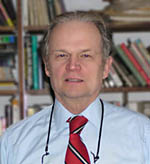 Secretary
SecretaryI graduated from Harvard in 1964 with a degree in Physics. That started a 50+ year focus on Special Relativity and the Twin Paradox. At Harvard, many of the lecturers had won the Noble Prize or would go on to win the Noble Prize. The feeling that was conveyed was that one should accept what was being taught as if it were part of a divine revelation. Specifically, Special Relativity “had been verified by experiment data to nine decimal places.” There was no mention of opposition or alternative views – not even a dismissive review of the Twin Paradox.
Most CNPS members can relate to my path to espousing alternative physics views. Senior year, I read a magazine article about the astronauts preparing to go to the moon. There was a sidebar about how Special Relativity’s time dilation predicted an astronaut would be younger when he returned from a round trip space flight. I showed the article to my professor and asked him to send a letter straightening out this science illiterate who claimed that Special Relativity’s (symmetric) time dilation predicted PHYSICAL changes in proper time accumulation. To my jaw dropping shock, he asserted that the article was consistent with Special Relativity. To be clear, if I had been taught Lorentz Relativity and the claim was that Lorentz Relativity’s (asymmetric) time equations predicted the astronaut would be younger, I would have said, “Of course.”
I debated the above issue with relativist physics professors for decades to no avail. So it was a great day when Greg Volk introduced me to the NPA which was founded on John Chappell’s mission to let the world know about Special Relativity’s inherent, fatal flaw. When the CNPS had to split from the NPA, it preserved John Chappell’s original mission as well as having a broader alternative science mission. So I was most highly motivated to do anything I could to have the CNPS thrive and continue its missions which are consistent with my 50 year search for valid science in the domain of relativity. So I plan to be a most active director.
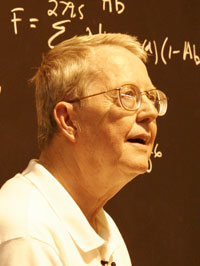 Treasurer
TreasurerI worked as an electrical engineer in research for over 40 years, specializing in the area of telecommunications in which I hold several patents. My first job was at Remington Rand Univac and worked on one of the first large vacuum tube computers. I worked over twenty years for North Electric in Ohio developing digital switching systems and then worked for another 20 years for ITEC in Huntsville Alabama working again in the area of telecommunications.
Current Work
In 2006, my son David asked to work on a gravity experiment to try and detect gravity as a particle. Since then, I have developed my own equation for gravity that is based on a cloud of forces allowing me to simulate any physical setup. My gravity equation helps explain anomalies such as velocity of the stars, dark matter, and perihelion advance, to name a few.
I joined the NPA because I was presenting a paper on the results of the gravity experiment that I did for David. That should have been the end of it, but curiosity got me. I wanted to know what caused my equation to give force curves the same as Newton’s equation. The equations were totally different.
So I continued. I learned more and more about what was wrong with gravity calculations. After 6 years of work, I had found enough problems that David suggested I write a book. My book titled “Gravity is Not Free” will be available soon.
More recently I was working with Paul Schroeder and Arde Ramthun on a theory of gravity using light waves. When that was done, I defined light as a stream of particles. Not only does it appear to work, it eliminates the wave particle duality. There are more situations involving light, magnetics, and more where the standard answers do not make sense. Based on this new concept, better explanations seem possible. David and I are now working on another book titled “The Particle Model of the Universe”.
I didn’t start as a dissident scientist, but my work over a ten year period has put me right in the middle of it.
Education
1960 B.S. in Engineering Physics from the University of Michigan
Personal
In 1957 I married my wife Pat and we have four children: David, Karan, Laurie, and Michael. Pat and I have 6 grandchildren and 6 great grandchildren. I am retired and live in Boca Raton, FL.
Societies and Associations
As a past member of the NPA Bob has written many papers on gravity; hosted gravity teleconferences for a period of 5 years; and has hosted 2 hour gravity meetings at the NPA conferences.
- John Chappell Natural Philosophy Society
I am currently a member of the CNPS and attended the first conference in Boca Raton, FL, in August of 2015.
My Goal: The CNPS needs to generate a document that includes one page summaries describing the theory of all physical phenomena. I have generated such a document for gravity. It needs to be reviewed, updated, and approved. Not to approve any one theory, but to approve the existence of competing theories, those that have some scientific validity. Guidelines for these documents need to be generated first.
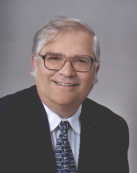 Director
DirectorOn January 31, 2014 I retired from John Deere’s Intelligent Solutions Group where I developed high-accuracy GPS navigation software to guide Deere’s combines and tractors at centimeter level accuracy. In 1962 I received a B.S. Degree in math and physics from Seattle Pacific College. My entire 50 year career was involved in applications using satellite surveying and navigation. My first job following college was for The Johns Hopkins Applied Physics Laboratory and was followed by work at Boeing’s Space Division, Magnavox Marine Systems and in 1994 was a co-founder of NavCom Technology which was acquired by John Deere in 1999. From 1998 to 2000 I served as Chair of the Satellite Division of the Institute of Navigation (ION) followed by serving as President for one term in 2000-2001. I have received the Johannes Kepler Award (1994) and Col. Thomas L. Thurlow Award (2000) from the ION and was elected as a Fellow of the ION in 2000. I have obtained over 30 Patents as the inventor or co-inventor and authored over 40 papers on navigation topics and over 20 papers on relativity topics. Currently, I serve on the U.S. Space Based Positioning Navigation and Timing Advisory Board.
As a director of the John Chappell Natural Philosophy Society (CNPS), I would strive to assist it in continuing to provide a voice for scientists from around the world who are interested in exploring foundational physical concepts which may be at odds with currently accepted theory. I would encourage exploring solutions to known anomalous physical phenomena, to explore alternate solutions to questionable concepts, and to propose experiments which could shed new light on physical concepts.
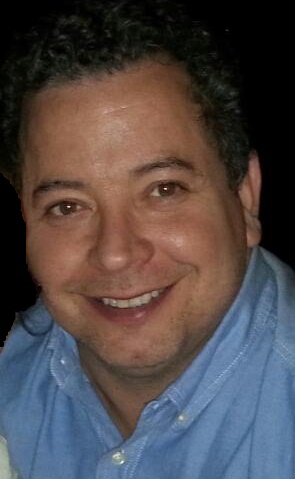 Director
DirectorRecent research as led me to serving as a director for the John Chappell Natural Philosophy Society. I am now greatly concerned that without a new crop of independent researchers progress in science will stall. These researchers will need a support base, like the CNPS, for which they can disassemble the development of modern theoretical physics and propose alternates without fear of professional retribution.
After serving in the US Navy as an Electrician's Mate, I worked as an industrial electrician for several major manufacturers. Acquiring my BSEE in 2008, I received a fellowship for a direct PhD program. In the few years post 2010, I had the opportunity to perform original research on mono-crystalline silicon for Microelectromechanical Systems (MEMS) at the Air Force Institute of Technology on Wright Patterson Air Force Base in Fairborn Ohio.
While not connected to my official research, certain experiments revealed puzzling similarities between elasticity tensors, the tensors used within General Relativity and the geometrical role that area plays in our understanding and modeling of theoretical physics. To my surprise and dismay, certain perspectives did not appear to have any prior modern research and required delving into the historical roots of field theory. This historical review revealed a gap within my coursework and that of modern textbooks of the precise role that Natural Philosophy continues to play within modern science. Coupling the intractability of the Cosmological Constant as the vacuum energy density with the reluctance of professional researchers to confront how we might have come to these physical paradoxes was profoundly shocking to me as a new researcher. Without any type of robust theoretical development review on the horizon it is my view that organizations that support this effort, such as the John Chappell Natural Philosophy Society, are imperative to fulfill this role. I am honored to be an active participant in the leadership of this important effort.
Enter the content which will be displayed in sticky bar
